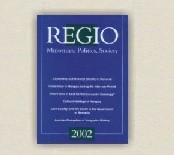Regional Identities and Meso-mega Area Dynamics in Slavic Eurasia: Focused on Eastern Europe
Regional Identities and Meso-mega Area Dynamics in Slavic Eurasia: Focused on Eastern Europe
Author(s): Osamu IedaSubject(s): Politics / Political Sciences
Published by: MTA Társadalomtudományi Kutatóközpont Kisebbsegkutató Intézet
Keywords: area; identity; region; integration; Eastern Europe
Summary/Abstract: The purpose of this article is to create concretely a new methodological terminology to analyze the emerging regions, or meso-areas; changing regions both in regional perceptions and in political and economic institutions. The main object to be interpreted by the new terminology is the post-communist meso-areas emerging in the former Soviet Union and Eastern Europe, or the Slavic Eurasian Mega-area in our geographical definition. The mega-area is a changing unit, whose regions have shared the Soviet type of political and economic institutions, and an identity as well in its active and passive senses. The mega-area is, though the communist regime collapsed, still a unit combining meso-areas on the basis of institutional identity, and it likely remains a unit, though it may be looser and looser in the future.
Journal: Regio - Minorities, Politics, Society - English Edition
- Issue Year: VII/2004
- Issue No: 1
- Page Range: 3-22
- Page Count: 20
- Language: English

